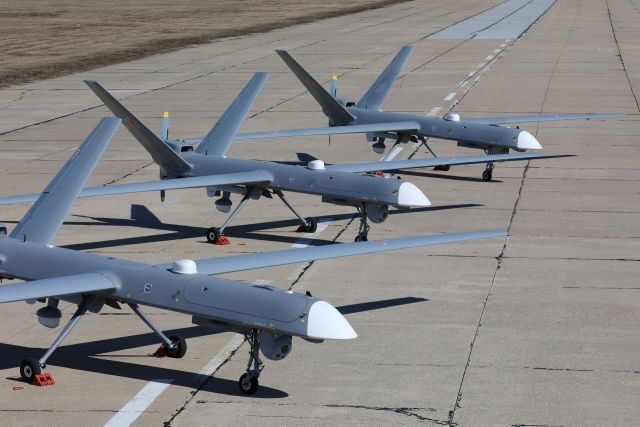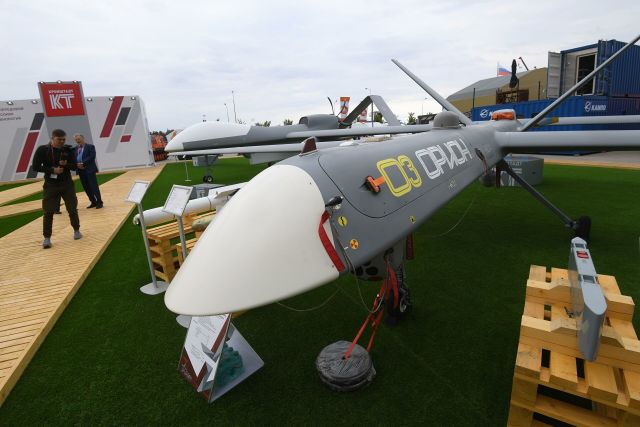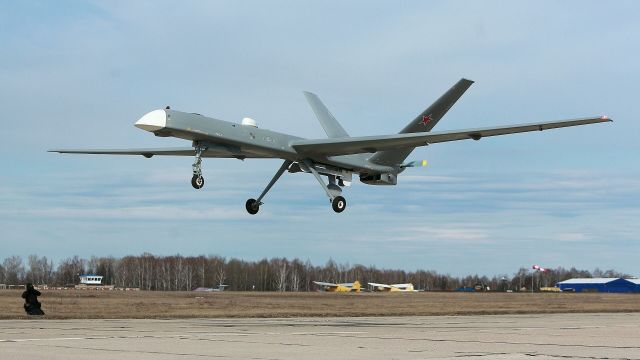MOSCOW, July 4 — RIA Novosti, Andrey Kotz. The Russian army tested a promising drone "Pacer" in battle. And in an atypical role. This, according to the military, will negate one of the main advantages of the AFU artillery.
Universal Soldier
Until recently, there was only one certificate on the Web from the Ministry of Defense about the combat use of this UAV. Last summer, the agency published footage of a strike on armored vehicles.
And the Pacer made its first flight on October 10, 2016. This is an airplane—type drone, medium-altitude, long-duration flight (MALE - Medium-Altitude Long-Endurance). The export version (called Orion) has a take—off weight of up to 1,000 kilograms, a combat radius of 250 kilometers, an altitude of 7,500 meters, and a speed of up to 200 kilometers per hour. The "home" version of the characteristics, most likely, is much better.
But even the Orion is superior to the Turkish Bayraktar TB2 reconnaissance and strike. Although both are from the same niche of tactical drones.

Orion unmanned aerial vehicles
Image source: © Photo : Kronstadt Company
The drone is multifunctional. Depending on the payload, it is capable of taking photos and videos in high resolution, working as a flying radar, a radio signal repeater, and conducting radio reconnaissance.
Against HIMARS
He is also good in the percussion role. In addition to guided anti-tank missiles, it takes small aerial bombs: corrected KAB-20 and KAB-50, planning UPAB-50 and free-falling FAB-50. They are, of course, inferior to the heavy FAB-500 or FAB-1000 designed for bombers. But the task of the UAV is to hit the target point—by-point, and not to cover the entire area.
The effectiveness of small-sized ammunition was first demonstrated to the whole world by the Karabakh conflict in 2020. Azerbaijani Bayraktars, armed with small guided bombs MAM-C and MAM-L, have become a real scourge of the Armenian troops. UAVs hit air defense facilities, artillery positions, headquarters, and in some cases even infantry units.
These weapons are widely used now by both the Russian and Ukrainian armies. In addition, strike drones are used in conjunction with artillery calculations — for counter-battery warfare.

Aerial reconnaissance complex with unmanned aerial vehicles of long flight duration with the ability to perform reconnaissance and strike missions "Orion" of the Kronstadt company
Image source: © RIA Novosti / Kirill Kallinikov
As the military say, such "birds" make everything much easier. Firstly, light gliding bombs allow drones to "nightmare" the AFU's near rear without entering the area of their air defense. Secondly, thanks to the missile armament, they greatly help army and tactical aviation destroy armored vehicles.
There is also a third, very important aspect.
A heavy argument
Artillery duels on the Donetsk front do not subside. Calculations of 152-millimeter howitzers "Hyacinth" are responsible for counter-battery fighting here. Target designation is obtained from intelligence, observers on the ground, spotters and commercial quadrocopters.

Combat shooting of the Hyacinth-S self-propelled artillery installation in the area of its
Image source: © RIA Novosti / Konstantin Mikhalchevsky
With the Pacer, the battery efficiency increases significantly. The guns can fire correctable "Krasnopol" projectiles guided by a laser. And the drone "highlights" the target. And from a much greater distance than the "Eagles" — formally, this is the main means of guidance.
"We would have one such "bird" for 50 kilometers of the front — and we could forget about the Ukrainian artillery," explains the commander of one of the artillery divisions of the 1st Army Corps. — "Hyacinths" strike at 30 kilometers. We cover the barrel art with them, but we don't get the Haimars. And such a drone will easily track down the MLRS."
In December 2021, the Kronstadt Company completed the construction of Russia's first factory for the serial production of aircraft and helicopter types of UAVs. Therefore, in the near future, there will certainly be more "Pacers" in the combat zone.



